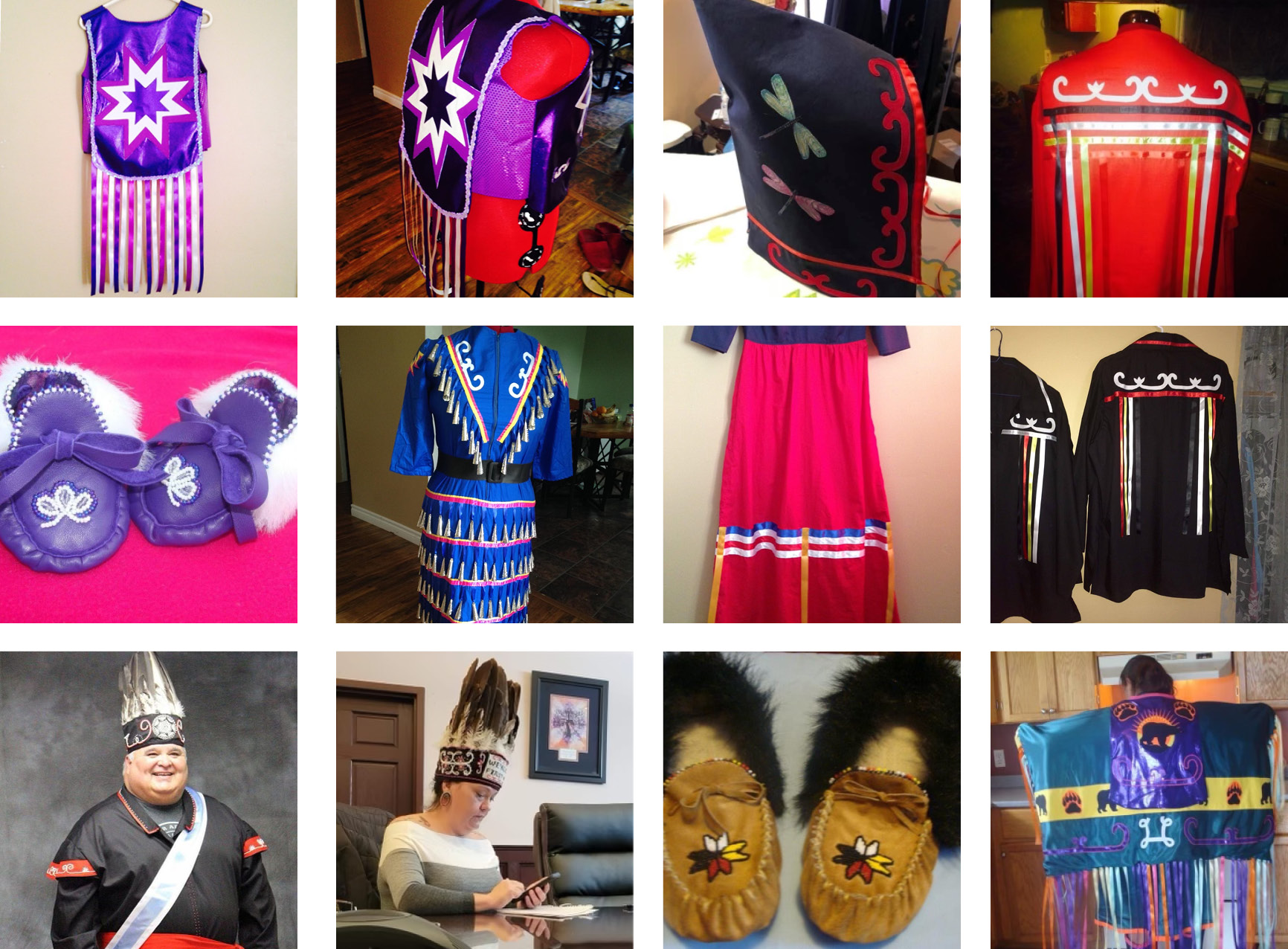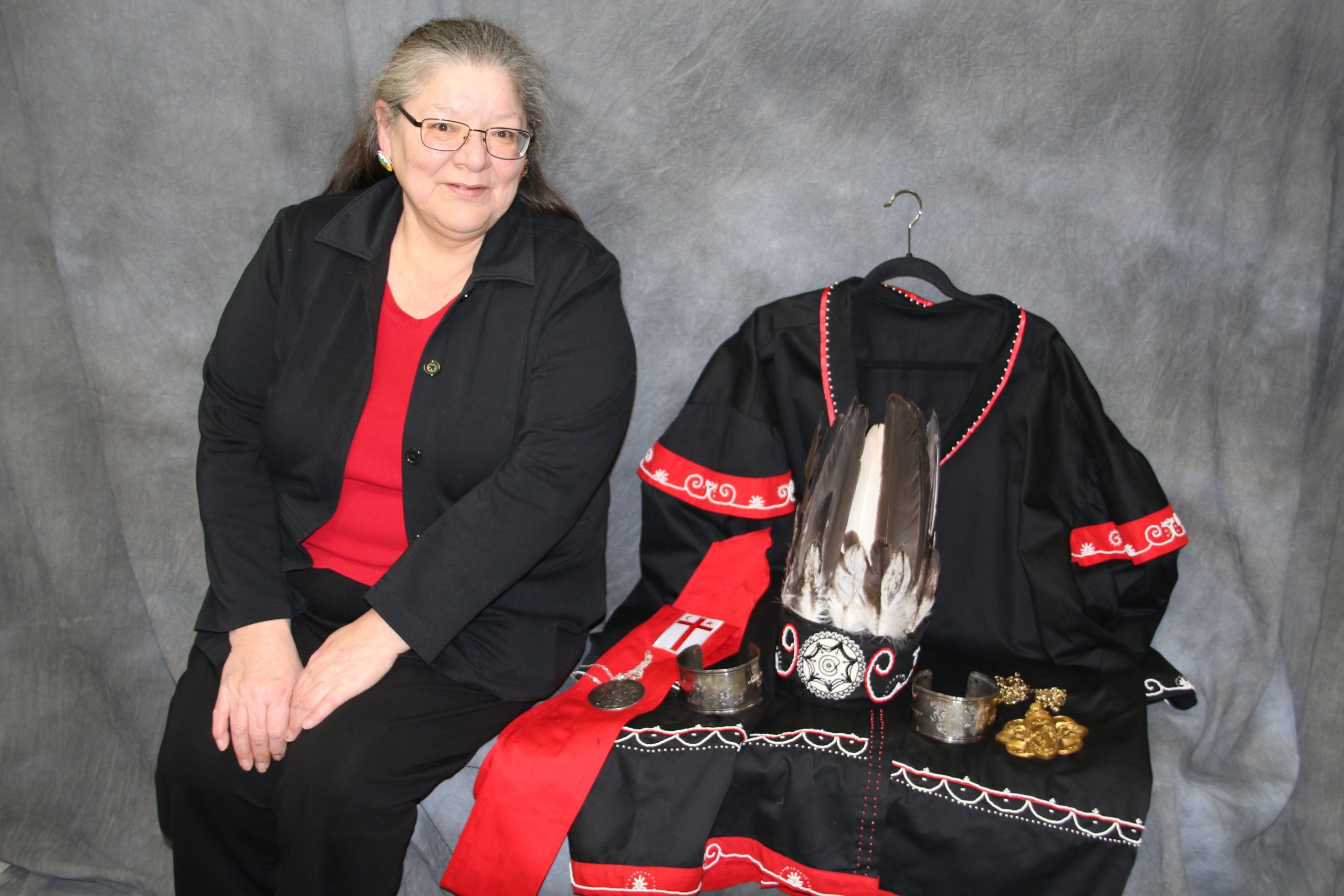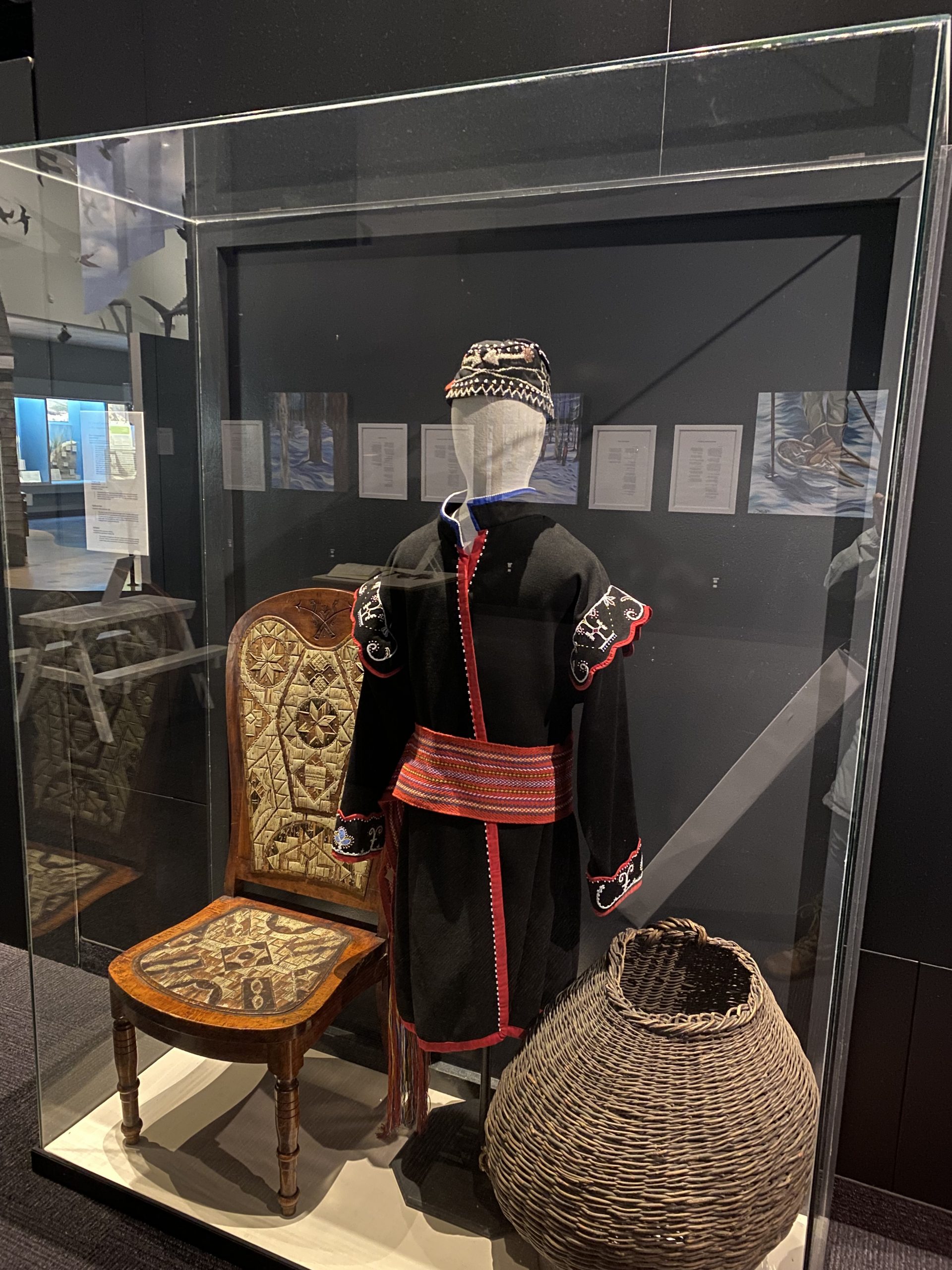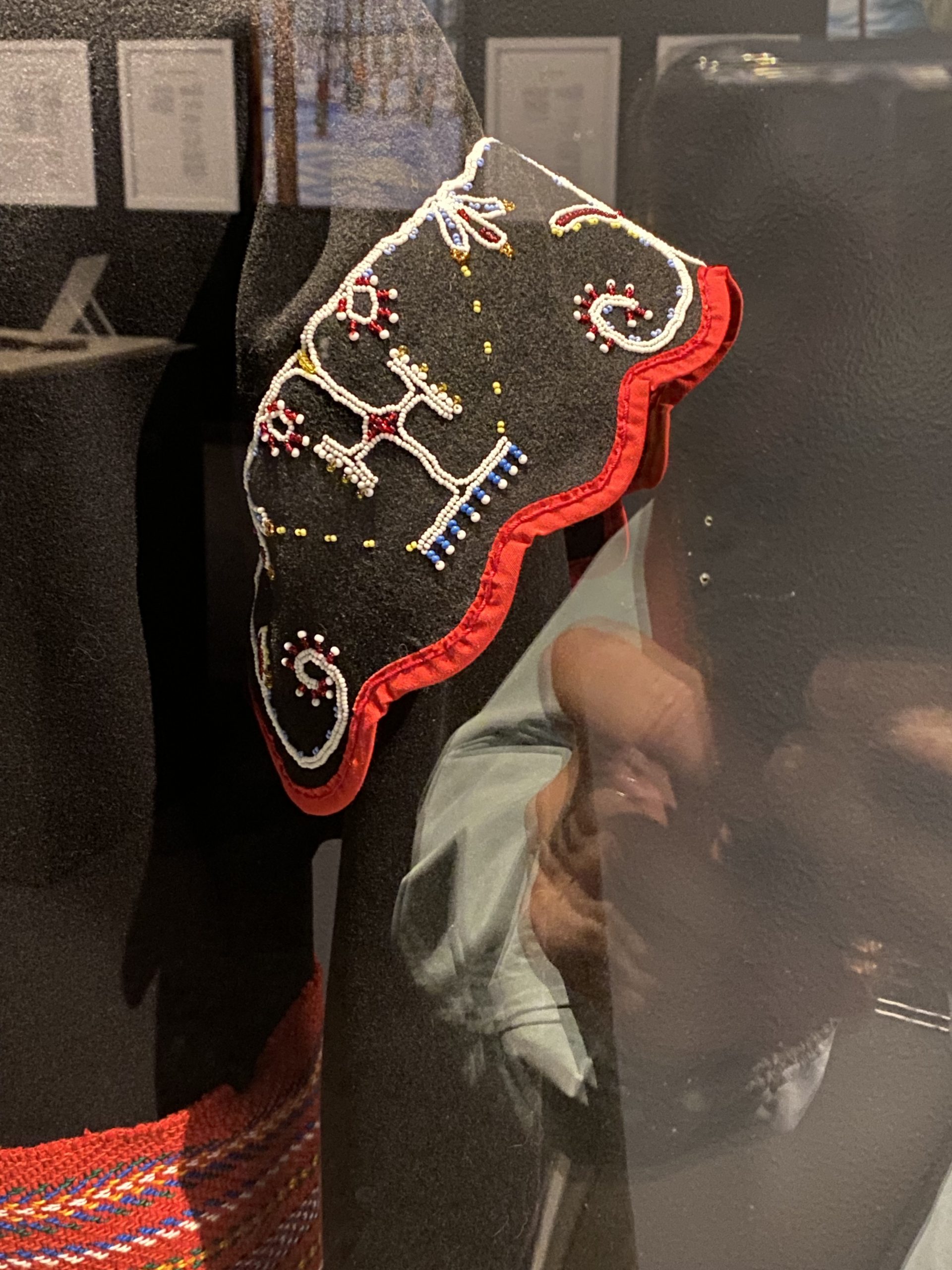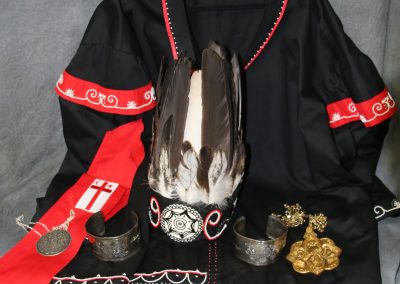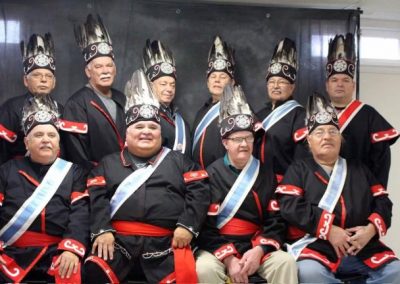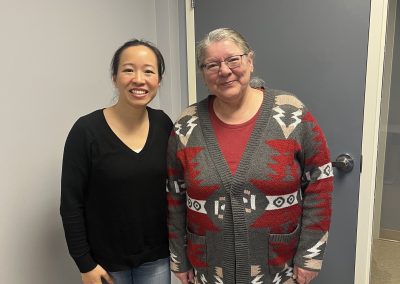Beading and Jacket
Ida Simon is a maker of traditional Mi’kmaw regalia and recreated a historical Mi’kmaw beaded jacket for the Nova Scotia Museum’s educational use.Various regalia made by Ida Simon, including ribbon skirts and shirts, headdresses, fancy shawls, moccasins, peaked cap, and jingle dresses. Ida often uses appliqué for the double-curve motif, rather than beadwork.
Bottom row (1st and 2nd images from left): Ron Knockwood (District Chief for Grand Council for Sipekne’katik Mainland); Chief Annie Bernard of Waycobah First Nation, Cape Breton.
Ida Simon with jacket she sewed and beaded for Ron Knockwood, District Chief for Grand Council for Sipekne’katik Mainland. Wendy Marr beaded the centre medallion of the headdress. Photo by Stuart Knockwood.
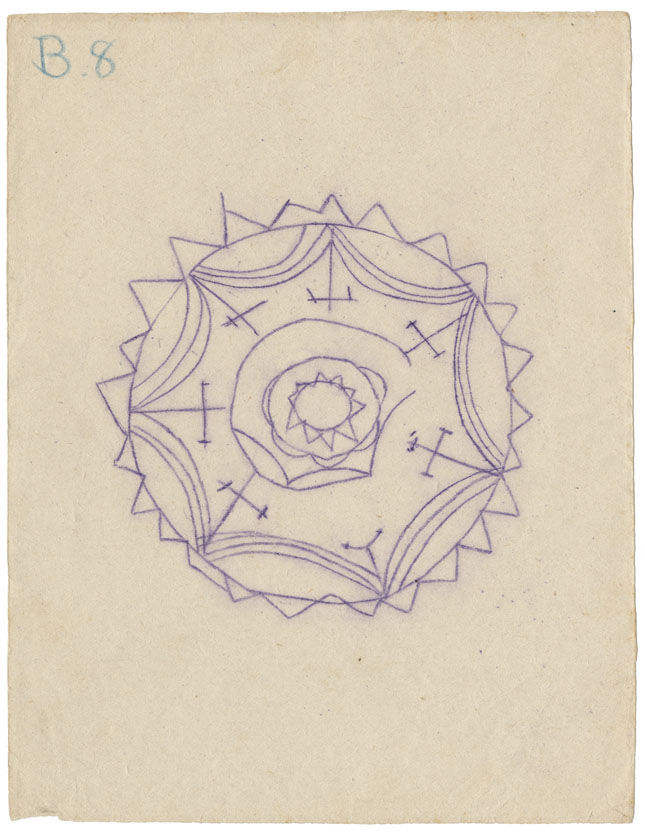
Interpretation of this 1888 Mi’kmaw petroglyph is “insignia of a Chief”. This was the basis of the beaded medallion on the headdresses for the Grand Council of Sipekne’katik Mainland. Image from George Creed Mi’kmaq Petroglyphs, Nova Scotia Archives.

Roger Lewis, showing the jacket at the Nova Scotia Museum. March, 2021.
01 Ida’s journey of making Mi’kmaw regalia
02 The double-curve motif
03 The jacket replica
The beaded jacket reproduction on display at the Nova Scotia Museum.
Chief’s Jacket and Headdress
This was the first Mi’kmaw jacket that Ida Simon made; She sewed and beaded the jacket. Wendy Marr beaded the medallion for the headdress. Photo by Stuart Knockwood.
Sante Mawiomi (Mi’kmaw Grand Council)
The Chief and Keptin (Captains) of the Mi’kmaw Grand Council. Ida made the jackets for the Grand Council shown here, while Wendy beaded the headdress medallions and bands.
Replica of chief’s jacket, Nova Scotia Museum
The beaded scalloped yoke on the back of the chief’s jacket. Wendy created the beadwork for the back yoke, shoulders & cuff, while Ida sewed the jacket by hand and finished off the added beadwork on the jacket.
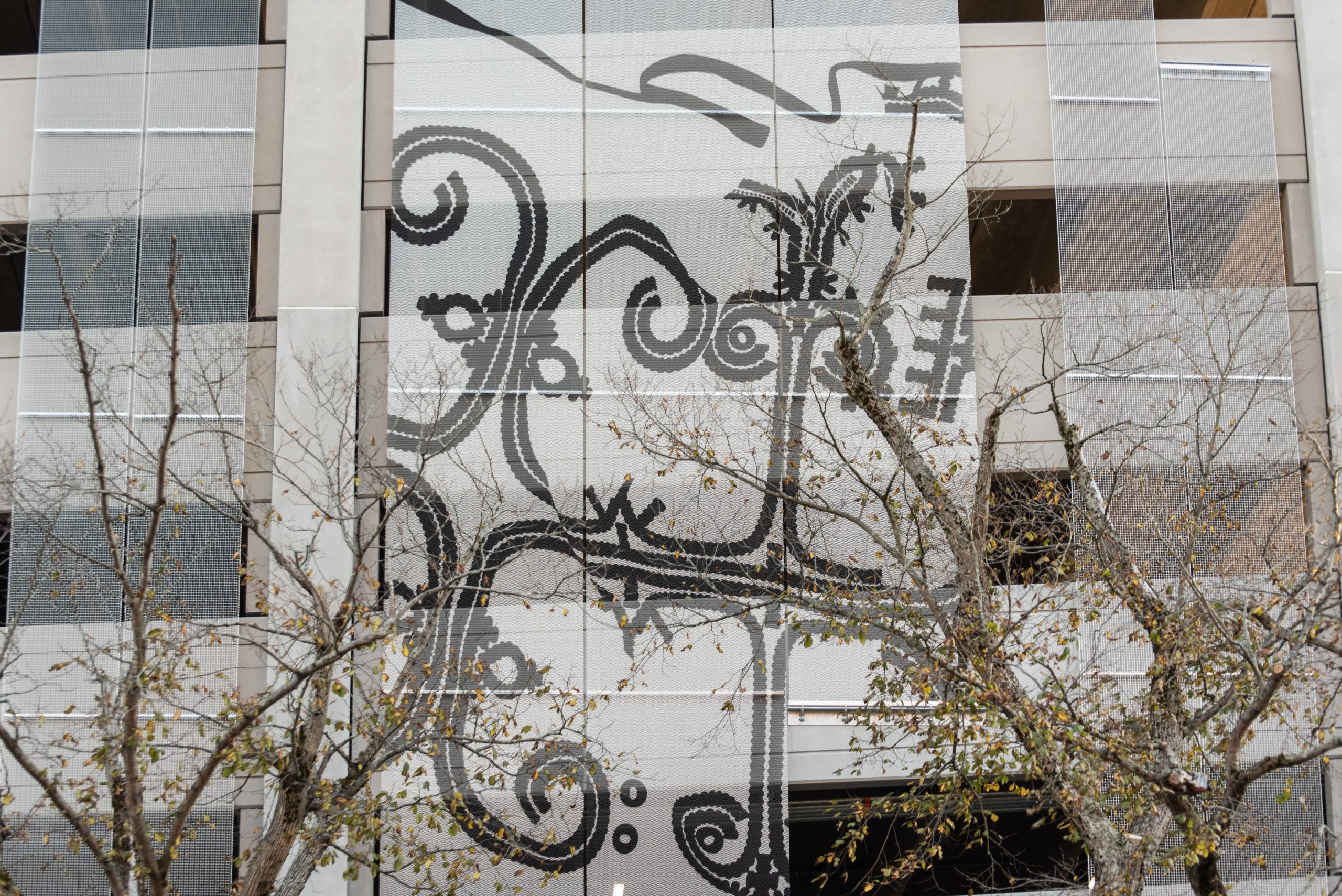
In Conversation, Beading, Andrea Tsang Jackson
The Mi’kmaw Grand Council (Sante Mawiomi) granted Andrea permission to use the beading motifs in this way.
RESOURCES
ABOUT THE ARTIST
Andrea Tsang Jackson is a Canadian-born visual artist of Chinese descent based in Kjipuktuk / Halifax, Nova Scotia. Her work takes the traditional craft medium of quilting and applies it to a contemporary context.
ACKNOWLEDGEMENTS
This project is possible with the participation of many people who offered their time, knowledge, and collaboration.

